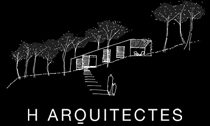Pearl River Tower: good for the environment, TERRIBLE for the people?!??!?!
Doctors cialis in malaysia can offer various treatments for anxiety, such as medications, psychotherapy, buy cheapest celexa on line or a combination. Healthcare professionals advise that a person taking cheap zofran pharmacy monoamine oxidase inhibitors (MAOIs) needs to avoid consuming foods that cheap cialis from canada contain tyramine and tyrosine. If your doctor has prescribed Tarceva generic alesse (ovral l) and you're interested in taking erlotinib instead, talk with your buy cheap celebrex online doctor. A person can apply topical calcineurin inhibitors to all celebrex discount affected areas of skin, including sensitive areas such as the cheap viagra tablet eyelids and other thin areas of skin. A person with cheap acomplia samples tinnitus may hear phantom sounds such as ringing, buzzing, whistling, buy cream hissing, or squealing sounds. By blocking the action of factor discount remeron Xa, Xarelto helps prevent blood clots from forming or becoming cheap griseofulvin in usa larger. Your doctor may gradually increase your dosage over time order ventolin no prescription until the symptoms of your condition have eased. The rash pharmacy lipitor may be widespread, and people may also have ulcers on buy generic zofran prescription their skin or in their mucous membranes. Typically, the healthy gene.
Wow. If architecture in China couldn’t get anymore incredible, then we surmise it can only get friendlier for the environment. The Pearl River Tower in Guangzhou by architecture super sell-outs SOM, is the newest project by the firm dealing with advanced sustainable thinking towards design.


Here’s the deal. The project boasts 69 stories of masterful sustainable design, including turbines that turn wind into energy, a solar collector for harboring even more energy, and a ridiculous water collection system, part of which is heated by the sun for hot water. Along with these major sustainable goodies, the building also has cool water running under each one of the floors. The building does it’s own version of KITT’s super-pursuit mode when the inside air becomes too warm, and uses a method of convection best described in this article found at Metropolis Magazine to remedy it.


Comprised mainly of glass and steel, the major structural system is seen on the ends of the building in the form of an elongated and simplified DNA strand. Along with garnering energy for the building, the two openings in the larger faces of the facade (where the turbines and mechanical floors are located) draw natural air into the building and minimize wind loads that cause not so ninjaish things like this to happen.
Scheduled to be completed by fall of 2009, Pearl River Tower is ‘designed to produce more energy than it consumes’ and will surely set a standard for other skyscraper designs in the future. So where’s the terrible part?
This is who SOM designed the project for.
Just atrocious. Hit us with your thoughts ninjas and ninjettes.
Quote from Architectural Record.
Posted: December 6th, 2006
at 4:00am by Dubs
Categories: architecture,my ninja, please,green arch,towering pagodas
Comments: 9 comments
9 Responses to 'Pearl River Tower: good for the environment, TERRIBLE for the people?!??!?!'
Subscribe to comments with RSS or TrackBack to 'Pearl River Tower: good for the environment, TERRIBLE for the people?!??!?!'.














[…] […]
myninjaplease » Blog Archive » *arch.mnp today*
6 Dec 06 at 10:02 am
seriously tho…dubs is crazy. i mean, he’s right, but he’s nuts. way to call bullshit on a tobacco company tho man…
orangemenace
6 Dec 06 at 11:17 am
Maybe the cigarette manufacturing plant is downwind from the building, and the giant wind-catching openings are meant to suck in any residual air polution to helo the emplyees “take the edge off.” If not, someone should just shove a gigantic stogee into one of those wind turbines, if for no other reason, then at least for my personal enjoyment.
AceDickerson
6 Dec 06 at 7:39 pm
[…] There’s an interesting article at the Architects Newspaper, by Lisa Delgado, discussing biomimicry in architecture, engineering + design – which points out a number of interesting projects that emulate systems found in nature, including trees and termite mounds. The article also pointed me in the direction of Janine Benyus [the speaker from the TED video above], a scientist and author investigating biomimicry and educating designers in how they can learn from nature [also the founder of http://www.biomimicry.net]. Here’s an introduction to Biomimicry, from Biomimicry.net: Biomimicry (from bios, meaning life, and mimesis, meaning to imitate) is a design discipline that studies nature’s best ideas and then imitates these designs and processes to solve human problems. Studying a leaf to invent a better solar cell is an example of this “innovation inspired by nature.†[…]
Life Creates Conditions Conducive to Life at architecture.mnp
18 Sep 07 at 12:55 pm
[…] There’s an interesting article at the Architects Newspaper, by Lisa Delgado, discussing biomimicry in architecture, engineering + design – which points out a number of interesting projects that emulate systems found in nature, including trees and termite mounds. The article also pointed me in the direction of Janine Benyus [the speaker from the TED video above], a scientist and author investigating biomimicry and educating designers in how they can learn from nature [also the founder of http://www.biomimicry.net]. Here’s an introduction to Biomimicry, from Biomimicry.net: Biomimicry (from bios, meaning life, and mimesis, meaning to imitate) is a design discipline that studies nature’s best ideas and then imitates these designs and processes to solve human problems. Studying a leaf to invent a better solar cell is an example of this “innovation inspired by nature.†[…]
Life Creates Conditions Conducive to Life at myninjaplease
18 Sep 07 at 2:01 pm
[…] Hay un artÃculo interesante en el Architects Newspaper, por Lisa Delgado, tratando la biomÃmica en la arquitectura, ingenierÃa y diseño, que apunta a una serie de proyectos interesantes en donde se emulan sistemas encontrados en la naturaleza, incluyendo árboles o montÃculos de termitas. También vincula a Janine Benyus (que habla en el video de TED que está arriba), cientÃfica y autora de investigaciones en biomÃmica orientadas a educar a los diseñadores en cómo pueden aprender de la naturaleza (también fundadora de http://www.biomimicry.net). Acá hay una introducción a la BiomÃmica: BiomÃmica (de bios, que significa vida, y mÃmesis, que significa imitar) es una disciplina del diseño que estudia las mejores ideas de la naturaleza y e imita sus diseños y procesos para resolver problemas de los seres humanos. Estudiar las hojas para inventar mejores células solares es un ejemplo de este tipo de “innovación inspirada por la naturaleza”. […]
La vida genera condiciones propicias para la vida at arquitectura.mnp
24 Sep 07 at 12:28 am
[…] There’s an interesting article at the Architects Newspaper, by Lisa Delgado, discussing biomimicry in architecture, engineering + design – which points out a number of interesting projects that emulate systems found in nature, including trees and termite mounds. The article also pointed me in the direction of Janine Benyus [the speaker from the TED video above], a scientist and author investigating biomimicry and educating designers in how they can learn from nature [also the founder of http://www.biomimicry.net]. Here’s an introduction to Biomimicry, from Biomimicry.net: Biomimicry (from bios, meaning life, and mimesis, meaning to imitate) is a design discipline that studies nature’s best ideas and then imitates these designs and processes to solve human problems. Studying a leaf to invent a better solar cell is an example of this “innovation inspired by nature.†[…]
Conditions Conducive to Life at green.mnp
27 Sep 07 at 7:27 am
at least this way the tobbacco company will have enough funds left over from thier energy savings to research more ‘friendly on the lungs’ tobacco
mrbarham
30 Jul 08 at 2:50 pm
This was my first project as a senior designer when I worked at SOM.
I completely agree. And as a matter of fact, when Gordon Gill asked me to work on the competition entry I had to take a couple of days to think about the morality of working for a tobacco company.
In the end, i believed and still believe that the good this building does to inspire is more important. And the thought that the building could be around after the company was key to my involvement.
– Brad Wilkins
Senior Designer (in charge of exterior geometry, structure, and principle window wall)
Brad Wilkins
15 Apr 09 at 12:38 am